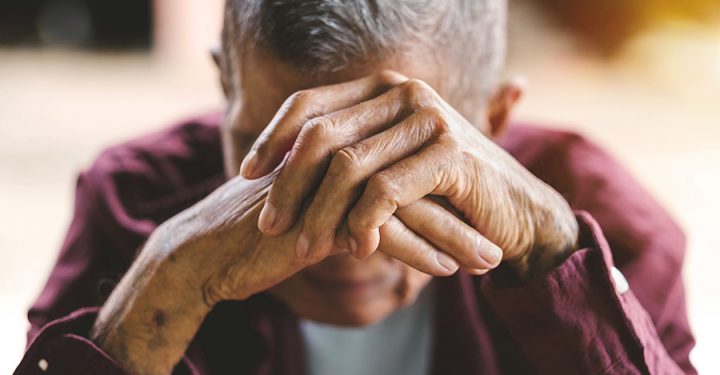
Saturday 06-02-2021
Sonali, 26 years old, is sitting in her deluxe room at the Vrundavan Nursing Home. Her facial features reflect a bitterness that does not belong to her age. The weariness on her face and a resigned look betray the turmoil inside her. She has been admitted in the hospital following a lacerated right ear and a fractured cheekbone. She told the attending surgeon that she slipped in the bathroom and caught her face on the door thereby injuring her. But even the doctor knows that she is lying and that this is just one more case of domestic violence with the true facts being swept under the carpet. He is helpless in addressing any other issue other than the physical wounds unless Sonali herself voices concern about the mental torture that she endures day and night. These injuries are only the tip of the glacier of difficulties that she has been going through in 3 years of her marriage with Vinit. It is difficult for her to relate to him as every small disagreement results in a severe reprimand conveyed through bruises and wounds.
Domestic violence is one of the leading social problems in today’s world. Husbands are the perpetrators and wives are the victims in most cases. The violence perpetrated within a relationship that is supposed to involve care and protection is a very serious problem. There is utter helplessness in the aftermath of interpersonal assault and victimization. The worst part is that this violence rarely stops on its own. Analysis of the perpetrators points to witnessing domestic violence or marital aggression between parents, experiencing physical or sexual assault in childhood as the major risk factors for the intergenerational transmission of family violence. There is an increased sense of vulnerability in these children and they tend to develop inappropriate attitudes about violence as a means to resolve conflicts. They may come to expect it as a way of life and do not learn to have any control over their impulses. If they are unable to overcome this traumatic childhood through love, competency, and exemplary behavior, their lack of experience with the non-violent resolution of differences makes them vulnerable to being unable to resolve differences by verbal communication. During times of stress, these earlier coping mechanisms may be resorted to thus creating emotional withdrawal and numbing in the partners. There is a subjective experience of shock, confusion, and speechless terror. In the early stages, there is a fierce resistance, which later gives way to a total absence of defense. The more prolonged the abuse, the more the feeling of betrayal and hopelessness. Thus the very attachments that can provide a powerful motivation in times of stress are threatened by violence. It is difficult for the victim to lock into their current environment with the same sense of energy and involvement. Simple activities like reading, conversing, and watching television are no longer reflex activities but require great effort. This further interferes with effective functioning and with the capacity to make the decision necessary to put their lives back on track. There is an increased risk of depression and suicide.
What should Sonali do?
First of all, Sonali must establish contact with her natural social support system. If this system is inadequate to ensure her safety, needs to find institutional resources. The primary requirement if of a place where she perceives that she is physically safe and where she can rest, sleep, and eat. There is a danger that if she is deprived of alternative sources of care, she may seek refuge with the nearest human being when frightened, and this often maybe her husband. When he is also seen as the principal source of protection, there may be a tendency to become protective of him and form intense emotional attachments that are difficult to break, even when there is ample objective evidence to show that continued contact with him constitutes a danger to her. She should also determine whether her husband is a cold, calculating sadist, relative free of emotional involvements who uses aggression with the intent to control, subjugate or intimidate her or whether he is a very dependent man who is primarily afraid of being abandoned by her and is trying to ensure continued submission through violence. If it is the former, she is better off without him in her life and for the later, a combination of counseling, love, and understanding but firm behavior does have a chance of improving his condition and helping her in consequence. Her goal should be to suggest help for him and if he is not receptive to it, the best thing is to part ways. To try and correct her spouse in a short period of time is almost impossible. If he has some deep-rooted personality problems, which has resulted in him being violent, it would be difficult to get rid of this trait. She should not hope that keeping quiet about the event would help her husband or her. She should talk about what has happened to her instead of hiding it. She will be listened to and believed if she talks about the trauma. After gaining an understanding of her own vulnerability, she needs to devise a plan to prevent a recurrence. She has to get over the feelings of shame and social isolation. She does have a variety of choices in how to live her life. She has to tell herself that she is not alone and she does not need to be treated in this manner. She is not to be blamed for what has happened to her and help is available for her. She should psychological support services to build her morale. She has to stop fearing abandonment and the stigma of being a victim of domestic violence. Do not die a daily death, before you actually die. Hopelessness is a kind of death. Nothing in life is permanent, so like the good phases, even the bad phases will pass away. Have faith and courage and you can defeat helplessness.



